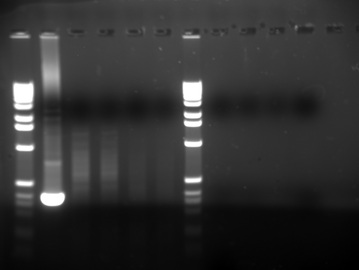PCR amplification detecting 1278insTATC mutation
and analysis of Tay-Sachs handicaps
| Manuscript |
The mutation 1278insTATC in the Hexosaminidase alpha polypeptide (HEXA) gene on chromosome 15 is the major cause of infantile Tay-Sachs disease (TSD) and can be visualized with PCR and electrophoresis (Myerowitz and Costigan, 1988). Thus, we hypothesized the primers designed to amplify a 1019- or 1016-bp sequence in PCR, could detect the presence of the insertion. Testing purified wild-type DNA from S9 epithelial cells has not yet been successful in detecting the sequence without the insertion. Varying annealing temperatures and magnesium concentrations, only obtained non-specific binding, faint bands, and primer dimers. In a sociological experiment, researchers experienced handicaps associated with TSD. The Global Assessment of Functioning (GAF) scale, which rates social, psychological, and occupational functioning allowed for comparison of degree of debilitation caused by the handicap. We hypothesized immobility would be most debilitating because of the greater need of assistance from others (Rintala et al., 1998). An ANOVA test revealed significance between the scores of immobility and muteness.
The full manuscript can be downloaded from the link below the figure on the left.
